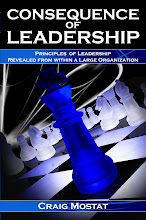After over a year of cat-lessness, I finally succumbed to the whining of the women (wife and 2 daughters) around me, and agreed to get another cat. We decided to rescue our new kitty from the highly bureaucratic SPCA – Society for the Prevention of Cruelty to Animals (our local animal shelter), and realize in hindsight that it would have probably been easier to adopt a child. After filling out the mountain of paperwork, and waiting several hours for the highly complicated series of checks, authorizations, procedures and form review, we were able to take our new hyper-kitty home to begin the process of house destruction. I did warn my wife ahead of time about the irresistibly tantalizing lure of her beautiful curtain thingies that hang on the side of each of the windows, to a cat on speed.
The goal or purpose of animal shelters, humane societies – or whatever they call it where you live – is to rescue animals and provide them with new loving homes. If they cannot provide a new home, the animals are "put down" (euthanized) and many people have a problem with that. So, you would think that these organizations would find a way to avoid this. Well, where I live – you would be wrong to think that.
It was a Saturday – busy day for the local animal shelter. The building was chalk full of animals of all types and sizes - looking their cutest - waiting to be rescued. The building was also full of people – mostly families with children that were just dying to adopt a pet. From a business perspective, this is a win-win combination. On the wall is a large digital counter with the title above "Number of pets adopted today" (I suppose to make everyone feel good about the work they are doing). It took us a total of 4 hours to adopt a cat! We were there until they closed. Total animals adopted that day, 45. My guess on how many families left without adopting because they grew tired of waiting – well over 100.
The bureaucracy was unbelievable. We filled out multi-page applications and questionnaires, asking questions like "what will you do if the cat scratches on the furniture," and "how much do you expect it will cost to care for and maintain a cat." I was mentally preparing for a polygraph test. I left with ten times more paperwork for a pet kitty than I received for the purchase of our home. Come to think of it; we left the hospital when our kids were born with no paperwork and you would think someone would provide some kind of manual for them.
All of this "over-complication" is the result of well meaning people trying to ensure that these animals get into a home where they will not be neglected or abused. However, now completely buried in the weeds of their own unnecessary rules, regulations, paperwork and formalities, these well meaning people have thwarted the goals and purposes of their organization. They are not alone – every organization has their own "pet bureaucracies" which are fed and nurtured.
Every process and system must be continually challenged for worthiness in an organization. "Stop doing lists" need to be just as important as "start doing lists." It is obvious that when focus moves off of the goal or purpose that your organization exists for and instead on to the "way things get done", results will diminish. Yet, like an addict on drugs, far too many organizations fall into this "addiction of process" and can't seem to shake it.
Leaders should constantly look at the processes, procedures and systems in their business and ask themselves these questions:
- What is the worst that would happen if we stopped doing this?
- If we stopped doing this, what purpose-focused endeavor could we direct that time and energy to?
It's time to euthanize the sacred cows in order to avoid "putting down" the results.
Add to Technorati Favorites
Bookmark this on Delicious




No comments:
Post a Comment